2020 is coming to the end. Of course, this was a very hard year for everyone. The covid19 pandemic, several lockdowns, and other disasters made everyone revise their approach to life. As for manufacturers, they have had to make various changes in their business models. Moreover, most of them couldn’t showcase the real power they have generated. But there have been some that could squeeze more from this situation. As a result, at the end of the year, we saw a few smartphones that brought unprecedented features. So in this article, we decided to collect the most eye-catching features we found on smartphones in 2020. Meet the top 8 smartphone technological innovations in 2020.
ARM Chips
Thanks to the continuous high demand for mobile chips in the global market, ARM architecture chips are taking off, and the technological gap between ARM chips and X86 chips is gradually narrowing. In recent years, the advancement of smartphone technology and experience has also relied on the development of ARM chips. The advancement of ARM chip technology is mainly reflected in leading the development of chip process technology and the landing of ARM chips in the notebook market.
The biggest significance of the ARM architecture chip built by the 5nm chip process is to show the world that there is still room for improvement in semiconductor technology. In other words, this means that more semiconductors can be packed into the same volume, bringing stronger performance and richer functions. At the same time, the 7nm process technology has become cheaper. So many manufacturers that couldn’t afford themselves 5nm chips, could easily use 7nm chips.
We should also point out that it took only two years to switch from 7nm to 5nm. In these two years, a lot of manpower, material and financial resources were invested to combat the increasingly extreme semiconductor process technology.
Apple M1
Apple is not the first company that wants to completely unify smartphones, tablets, PCs and other devices. But Apple is definitely the first manufacturer to achieve organic integration of such devices, which is the reason why Apple’s M1 chip set off a huge wave. The Apple M1 chip is a kind of test. In the future, M2 and M3 will bring more software and hardware adaptations and changes from the feedback of the Apple M1 chip, which will not prevent the ARM chip from invading the notebook market.
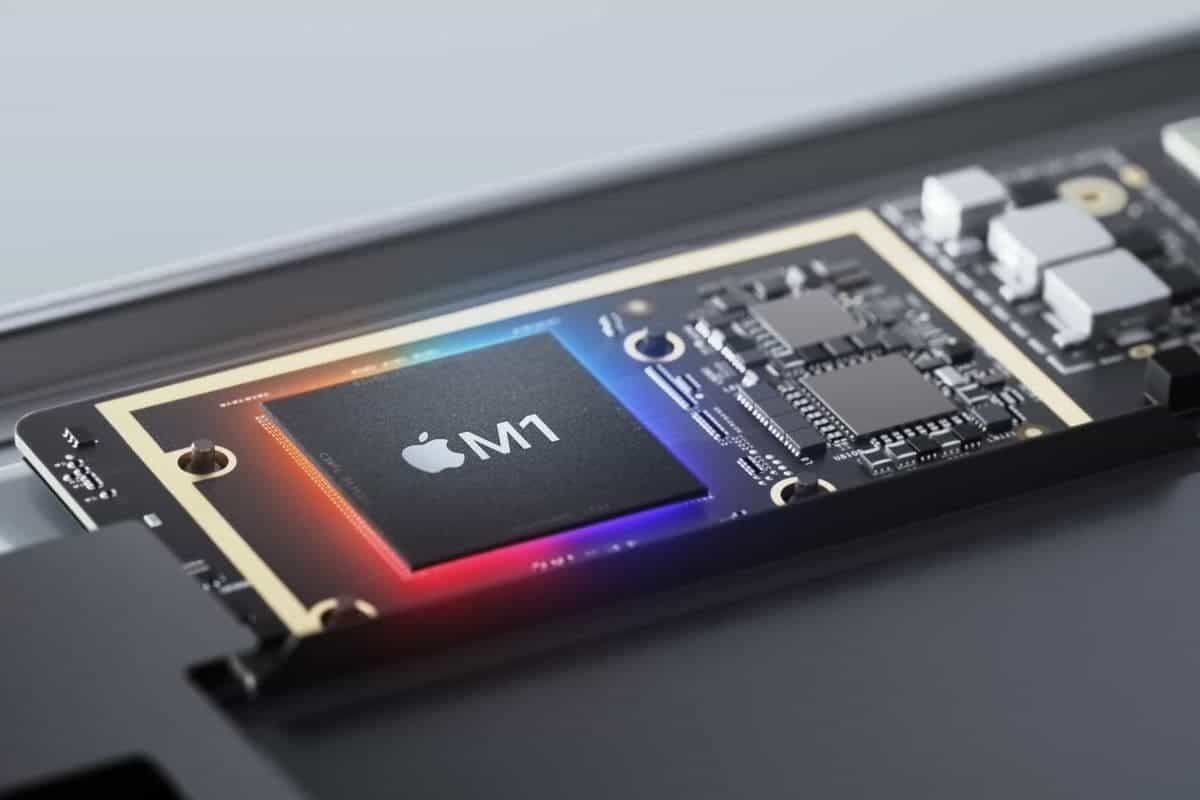
The arrival of ARM chips in the notebook market is a phenomenon in the current notebook market. Previously, Qualcomm Snapdragon 835, Snapdragon 850 and Snapdragon 8cx appeared on notebooks. The emergence of Apple’s M1 chip pointed the way to notebooks using ARM chips—software and hardware.
Faster wired / wireless charging
The development of lithium battery technology has stagnated. The application and price of “graphene”, which is known as the savior of battery technology, are not ideal. So the manufacturers have had to invent something substitute. At the moment, the wired fast charging reaches up to 120W and wireless fast charging up to 50W.
120W ultra-fast flash charging technology
In 2019, the OPPO Reno Ace won user reputation with the high efficiency of 65W fast charging in 30 minutes. Since then, the wired charging power war has officially started. In 2020, VIVO and Xiaomi uncovered 120W wired charging technology. It can fully charge a 4000mAh battery in 20 minutes.
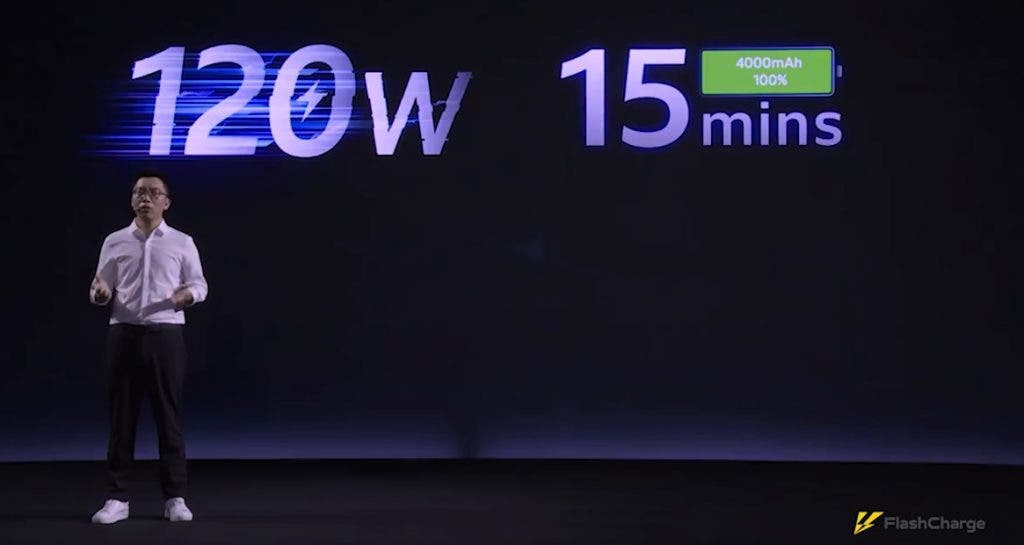
However, the charging speed is not the focus of the manufacturers. We mean it’s highly correlated with the feeling of safety. So the higher the charging speed, the less is safety (trust).
50W wireless fast charge
The development of high-power wireless fast charging is another surprise brought by smartphone manufacturers this year. OPPO (40W), Xiaomi (50W), Huawei (50W), and Meizu (27W) all bring home wireless charging solutions. The advantage of high-power wireless charging is that there is no restriction of the charging wire.
Image stabilization: Micro PTZ
Jitter has always been a problem and needs to be solved. People use smartphones to shoot videos more frequently. So users have new requirements for the stability of video shooting. Smartphones with good image stabilization often use a combination of optical image stabilization (OIS) and electronic image stabilization (OIS) to somehow solve this problem. In this sense, the method of micro PTZ is to relatively fix the lens and the photosensitive element together.
Micro Cloud Platform Structure
Micro PTZ technology was unveiled at VIVO APEX 2020 and mass-produced in VIVO X50 Pro, which is currently the only mass-produced model coming with this technology.
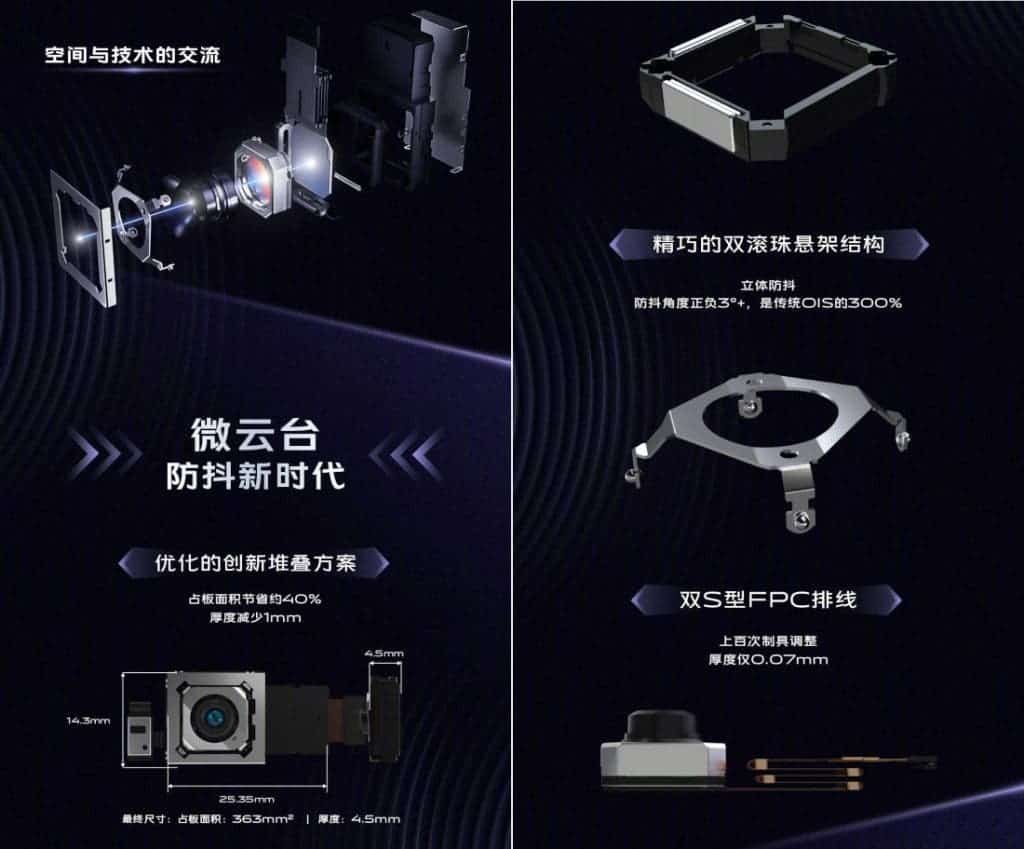
In motion video recording, Micro PTZ technology is more effective. It is born out of smartphone image stabilization technology, which also brings better image stabilization effect. As a result, it is easier to capture the picture, and the shooting process can not use pan/tilt accessories, which reduces the difficulty of video shooting in many ways.
Micro PTZ size
Technological innovation requires a lot of costs. And this is true for all top 8 smartphone technological innovations in 2020. In this regard, the internal structure of the ‘micro-pan-tilt’ is complex and precise. It consists of a limit mechanism, a double ball power frame and other parts that are composed of various parts. So it occupies a lot of space. Plus, the workmanship is complicated. If the miniaturization and cost control of the Micro PTZ technology are further resolved, the application prospects will be even broader.
Under-Screen Camera Technology
There is a real conflict between two requirements the smartphone users have. On the one hand, we want it to sport a true full-screen. But on the other hands, we want a better front camera for selfies. The major smartphone makers have already offered various solutions, including a notch screen, hole-punch screen, waterdrop screen, sliding structures, pop-up cameras, etc. But none of these make the smartphone have a genuine full-screen. The only solution is considered to be the under-screen camera technology.
ZTE AXON 20
First, we should say that the under-screen camera is not a simple technology. It will first change the design of the internal components of the smartphone and have new requirements for the camera. In addition, the camera is placed under the OLED screen, which reflects and absorbs light to a certain extent. We mean it directly affects the imaging effect of the front camera. The landing of this technology is inseparable from the cooperation and optimization of supply chain enterprises by smartphone manufacturers.

The screen supplier of the ZTE AXON 20 is Visionox. When ZTE AXON 20 was listed, Visionox’s stock price rose sharply. This proves that the market is optimistic about the under-screen camera technology. But Visionox is not the only manufacturer that can make under-screen cameras. OLED, BOE and Samsung are also testing the mass production schedule of corresponding screens. We know that the next-generation Samsung flagship will adopt the under-screen camera solution as well.
Folding Screen Smartphones
Folding screen smartphones can bring significant use improvement in terms of use scenarios. In this sense, this could be the most demanded feature among the top 8 smartphone technological innovations in 2020.
However, we should also point out that this technology is not mature yet. And the best prove of this is the bulky design of all phones with this technology. However, folding screen technology is the most reliable way to obtain a large screen before the current screen display technology breaks through. The key to achieving a folding screen is: ‘flexible OLED” + “mechanical structure’.
OPPO X 2021 Concept Phone
There are two ideas for folding screen mobile phones in 2019. One is to ‘expand the effective display area through folding screens’ (led by Samsung), and the other is to ‘make smartphones thinner and lighter through folding screens’ (led by Motorola). But OPPO has decided to go further. The OPPO X 2021 undoubtedly brings a third design idea for folding screen smartphones.
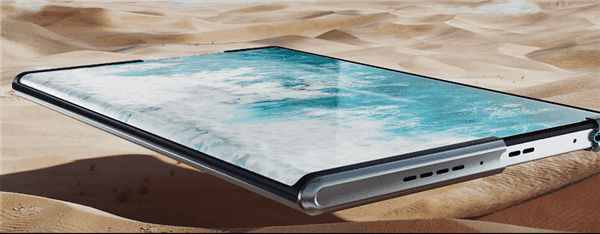
The OPPO X 2021 adds a motor to the folding screen smartphone. The phone screen opens/closes in the form of a reel, which can get a larger display area when needed, and shrink the screen when it needs to be portable to keep the overall light and thin.
From the product design concept, the motor-driven screen opening/closing method can better meet people’s needs for different sizes. The screen ratio can be switched back and forth between 4:3 and 19:9 as the screen opens/closes. For users, you can choose the appropriate screen ratio according to your needs.
Corning Gorilla Glass
We guess this is going to be the most useful feature among the top 8 smartphone technological innovations in 2020. The glass cover of the smartphone is very damageable. Also, it’s one of the most expensive parts when repairing the phone. The survey data shows that users neither like the glass cover of the smartphone to break when dropped, nor do they like the glass of the smartphone being scratched during use.

In addition to smartphone manufacturers’ innovations in smartphone structure, technological achievements from upstream companies cannot be ignored. This year, Corning’s new generation of Gorillas Glass Victus has achieved improvements in both scratch resistance and drop resistance. The board is more “tough” and has more possibilities in the design of smartphones. The Gorillas Glass Victus is different from the previous products in anti-drop and anti-scratch terms. This is for people who don’t like to put a protective film on the phones.
Compared with the previous generation Corning Gorilla Glass, Gorillas Glass Victu’s improvement in anti-drop and scratch resistance is obvious. The phone can be dropped from a height of 2 meters and nothing will happen to it. The scratch resistance of Gorillas Glass Victus is two times of Corning’s sixth-generation Gorilla Glass.
The first smartphone with the Vitus is the Xiaomi Mi 11.
Telephoto Lenses
Obviously, the rear camera of the smartphones have been one of the main focuses of all major smartphone manufacturers. The main camera size is getting larger and the pixels are getting higher and higher. But we should state that there are not many innovations in this field. In this sense, the telephoto macro and RYYB telephoto lenses can be said to be the only innovations.
The telephoto macro lens maintains the same framing with the ordinary macro lens, but the ordinary macro lens is far inferior to the telephoto macro in terms of display accuracy. The telephoto macro is specially designed for macro scenes.
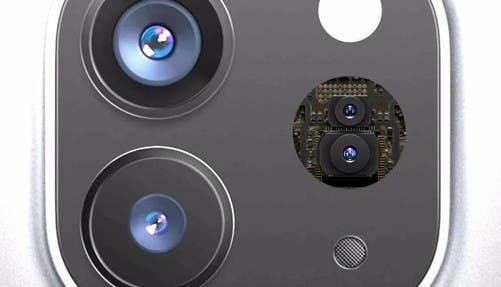
RYYB telephoto, to a certain extent, breaks the tradition of periscope telephoto only having RGGB array. Compared with the RGGB telephoto, the biggest improvement of the RYYB telephoto is more light input and better telephoto night scene shooting ability. The RYYB telephoto lens was unveiled on the Huawei P40 Pro.
This RYYB telephoto lens has up to 5x optical zoom and up to 50x digital zoom. But zoom is not the biggest feature of RYYB telephoto lens. The high sensitivity of the RYYB array camera is innate with the periscope telephoto ‘telescope’ advantages, greatly improving the shooting effect of telephoto lenses in various telephoto scenes.
3D Perception Technology
The most obvious effect of introducing 3D perception technology in smartphones is to enhance shooting and enhance the AR application capabilities. Manufacturers such as Apple, Samsung, Meizu, and Huawei have added 3D perception technology to their flagship serial products, such as lidar and ToF lenses.
iPhone 12
by the way, this is one of those rare features that comes our way from Apple and has appeared in our top 8 smartphone technological innovations in 2020.
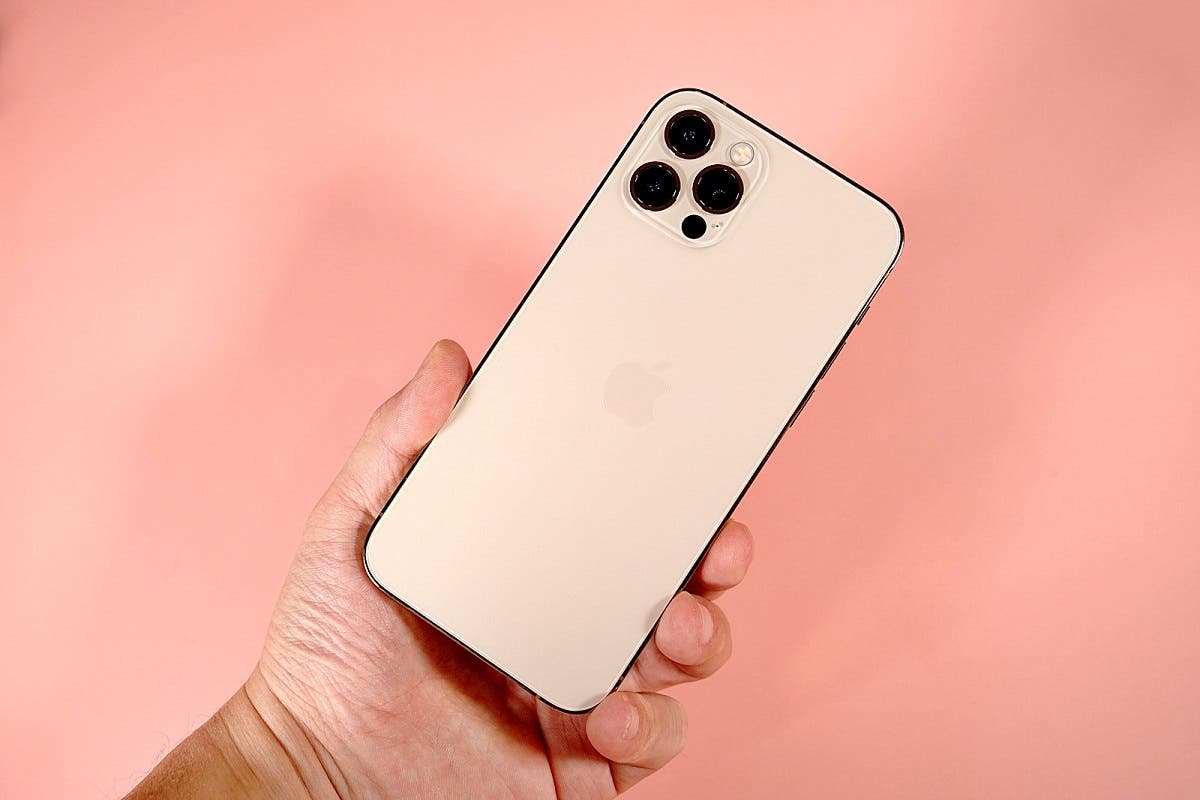
The lidar of the iPhone12 series mainly solves the problem of inaccurate camera focus. It also allows the iPhone12 series to focus in places where you can’t see your fingers, improving the focus accuracy of Apple phones. At the same time, we noticed that the Android camp is also using 3D sensing technologies such as ToF lenses to enrich smartphone functions (for example, Samsung uses ToF lenses to perceive and redraw objects, and Meizu 17 Pro’s ToF lenses can perceive the environment in low light).
Although the current 3D perception technology has not fully entered the consumer market, the giants’ patent war on 3D perception technology has already begun: Samsung, Apple, Microsoft, and Huawei are all important players in this field. 3D perception technology will become a supporting construction of AR application scenarios in the future. As smartphones can connect to more and more IoT devices, 3D perception technology will become more and more popular in smartphones.
Wrap Up
As you can see, many features in the top 8 smartphone technological innovations in 2020 list are still immature. This simply means either they won’t appear on the forthcoming phones or they won’t provide the best performance we require.
On the other hand, we should state that almost all major smartphone makers are working hard to bring new useful features to the smartphone industry. Of course, we understand that the competition is fierce and they try to keep their place on the market. But we should also say that this will make the future products way better.
Anyways, the current smartphones are incomparable with those what we saw a few years ago. And though there are not many innovations, they still look quite attractive.
Follow Gizchina.com on Google News for news and updates in the technology sector.

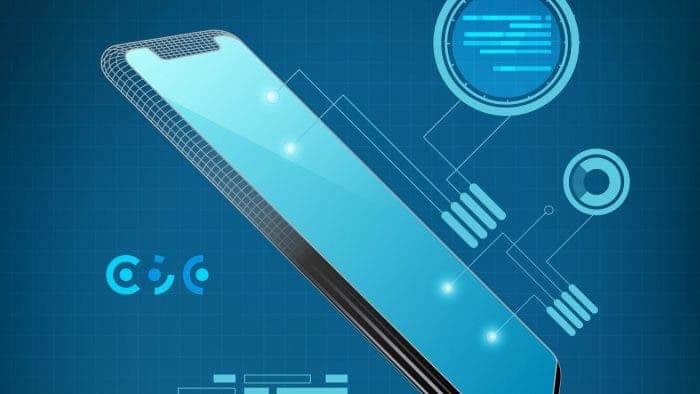



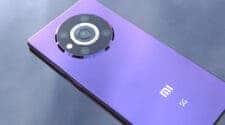
Isn't note 20 had use Victus